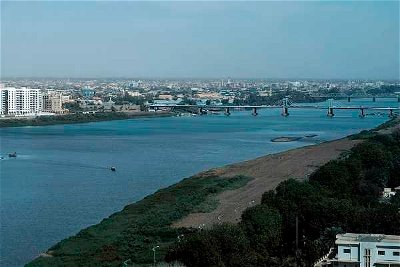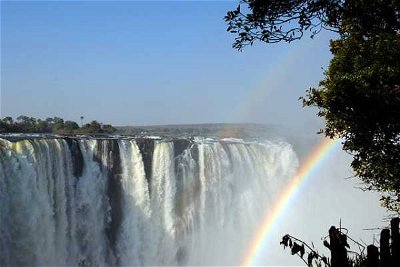1. Starting at the most western landlocked nation, Mali is separated from the Atlantic ocean by the width of one small country.
Which one?
From Quiz All Sand But No Beaches: Landlocked Africa
Answer:
Senegal
Mali is the eighth largest country in area in Africa. It is a peanut-shaped country with a fertile southwest section where most of the population resides. Mali borders Senegal to the west, Mauritania to the northwest, Algeria to the northeast, Niger to the east, Burkina Faso to the southeast, Ivory Coast to the south, and Guinea to the southwest. The small southern portion is cultivated around the Niger and Senegal Rivers, while the central semi-desert is the Sahelian semi-arid zone, separating the green of the south from the harshness of the vast northern desert Saharan zone.
The closest coastline is through the Senegal River to the Atlantic but it is not navigable for its entirety. There is a road from the capital Bamako to the Atlantic coast through Senegal but it is 1200 km and of poor quality. The Niger (with 1,700 kilometres in Mali) is Mali's largest river. According to the Library of Commerce, the Niger is generally described as "Mali's lifeblood", a source of food and drinking water, its main irrigation source, and historically for transportation. However, it is a long way to the ocean. It flows northeast from Bamako to Timbuktu where it swings hard right and travels to the coast via Niger, Benin and Nigeria, a distance of 3400km. In modern Mali, the main transport route from Mali is south, 1100km by road to the Ivory Coast port city of Abidjan.
Sixteen of Africa's 55 countries are landlocked. Africa's landlocked countries are some of the poorest countries in the world with 14/16 classified as "low" on the Human Development Index. Africa's landlocked countries must all depend on neighbouring countries that have marine borders for the transportation of goods. This means potential delays, certainly higher costs such as additional costs from tariffs and duties placed on international border trade, and even the lack of development of economies. (This causes a lack of ability to export goods competitively). Most of Africa's landlocked countries are also poorly governed and have been troubled with civil unrest.
Trouble exporting goods suppresses growth in the manufacturing sector and, as such, landlocked African nations (LLN) tend to rely on commodities and natural resources for income. In some cases only one or two commodities. eg Botswana and the Central African Republic are dependent on gold and diamonds with price drops causing chaos in such countries' economies.
Most African LLNs have poor governance as they are generally young independent countries with little experience in running countries. Robert Mugabe ruined the once prosperous country of Zimbabwe which he ruled for forty years. Ethiopia became landlocked because it allowed a Marxist regime that presided over civil war and famine, to release part of it to secede to form a new country leaving Ethiopia landlocked.
Most of the landlocked countries in Africa have gone through civil wars and similar conflicts, often fuelled by the differences between ethnic groups and religious groups. This is because Africa's borders, were, in the main, drawn up by the former European colonial powers, without any regard for pre-colonial allegiances of local ethnic and religious groups.
Phoenix Rising team member 1nn1 was pleased to add his virtual signature as a footnote as it means he finally reached the end of the question.










 Quick Question
Quick Question